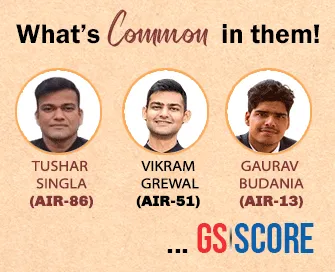

5th July 2025 (10 Topics)
Mains Issues
Context
The Aurangabad Bench of the Bombay High Court directed Parbhani police to register an FIR within a week in the alleged custodial death of Dalit law student Somnath Suryawanshi, citing prima facie evidence of custodial torture and fundamental rights violations. The decision follows a petition filed by the victim’s mother after autopsy and judicial findings revealed signs of physical assault during illegal detention.
Definition and Context
- Custodial death refers to the death of an individual while in police or judicial custody.
- It includes deaths due to torture, negligence, denial of medical care, or abuse during interrogation or detention.
- Constitutional Provisions Violated
- Article 21: Protection of life and personal liberty.
- Article 20(3): Protection against self-incrimination.
- Article 22: Protection against arbitrary arrest and detention.
Legal Provisions & Judicial Guidelines
- DK Basu vs. State of West Bengal (1997): Issued 11 binding guidelines on arrest and detention and introduced mandatory arrest protocols, maintenance of arrest registers, and medical checks.
- Nilabati Behera vs. State of Orissa (1993): Ensured compensatory jurisprudence for custodial violence victims.
- Prakash Singh vs. Union of India (2006): Mandated police reforms including separation of law and order and investigation wings.
Recent Data and Trends
As per NCRB 2021:
- 88 custodial deaths reported.
- Only 21 cases led to FIRs.
- NHRC data (2017–2022): Over 2,000 custodial deaths across India.
Causes of Custodial Deaths
- Use of third-degree methods during interrogation.
- Lack of surveillance (absence of CCTV coverage).
- Delay or denial of medical assistance.
- Political interference in policing and lack of accountability.
- Weak implementation of court-mandated guidelines.
Institutional Mechanisms
- NHRC and SHRCs: Empowered to investigate custodial deaths and recommend compensation.
- State Police Complaint Authorities (SPCAs): Weak presence or limited autonomy in most states.
- Judicial Magistrate Inquiries: Often delayed or poorly executed.
International Frameworks
- UN Convention Against Torture (UNCAT): India signed in 1997 but has not ratified.
- Nelson Mandela Rules (2015): UN standards for humane treatment of prisoners.
- Universal Declaration of Human Rights (1948): Right to dignity and protection from torture.
Recommendations and Reforms
- Enact a comprehensive anti-torture law in line with UNCAT.
- Ensure independent investigation by external agencies in all custodial deaths.
- Strengthen police accountability mechanisms as per Prakash Singh guidelines.
- Mandatory use of CCTV in all police stations and lock-ups.
- Establish fast-track courts for trials in custodial violence cases.
- Include human rights and ethics training in police curriculum.


Mains Issues
Context
CJI B.R. Gavai reaffirmed the judiciary’s commitment to a transparent, merit-based, and socially inclusive collegium system for judicial appointments. His remarks, made at a Bombay Bar Association event, come amid heightened concerns over external interference and demands for greater accountability in the process.
Collegium System
Definition and Constitutional Basis
- The Collegium System is a mechanism for appointing judges to the Supreme Court and High Courts.
- It is based on judicial interpretation of the Constitution; not mentioned explicitly in the Constitution.
- Primarily derives its legitimacy from Articles 124(2) and 217(1).
Evolution Through Judicial Pronouncements
- First Judges Case (1981): Gave primacy to the executive in judicial appointments.
- Second Judges Case (1993): Shifted primacy to the judiciary; established the collegium system.
- Third Judges Case (1998): Clarified the composition and procedure; CJI + 4 senior-most SC judges.
Composition of Collegium
- Supreme Court Collegium: CJI + 4 senior-most Supreme Court judges.
- High Court Collegium: Chief Justice of the HC + 2 senior-most HC judges.
Functions of Collegium
- Recommends appointments and transfers of judges in High Courts and the Supreme Court.
- Plays a crucial role in maintaining judicial independence.
- Sends recommendations to the Law Ministry ? then to the President for appointment.
Procedure for Appointment
- Chief Justice of India is usually the senior-most SC judge.
- For SC judges: Proposal initiated by CJI with collegium concurrence.
- For HC judges: Proposed by HC Collegium ? vetted by SC Collegium.
- Final appointment made by President of India.
Criticism of the System
- Lack of transparency in decision-making.
- No formal mechanism for recording reasons or ensuring accountability.
- Exclusion of the executive and legislature, raising concerns over checks and balances.
Efforts for Reform
- National Judicial Appointments Commission (NJAC) Act, 2014 was passed to replace collegium with a broader body.
- Struck down in 2015 by the Supreme Court as violating the basic structure (judicial independence).
Recent Developments
- CJI B.R. Gavai emphasized transparency, merit, and inclusive representation in appointments.
- Steps taken to publish collegium decisions online to ensure public accountability.
Way Forward
- Institutionalize clear criteria for selection.
- Ensure diversity in appointments (gender, caste, region).
- Introduce external oversight mechanisms without compromising judicial independence.


Prelims Articles
Context
A coalition of five prominent Naga tribes in Nagaland has called for a re-evaluation of the 48-year-old reservation policy in State government jobs. They argue that the existing quota for 11 "backward" tribes is outdated and no longer reflects present-day socio-economic and educational conditions.
Reservation Policy in Nagaland (Since 1977):
- A reservation system was instituted for 11 "backward" tribes in Nagaland in 1977.
- The policy was continued indefinitely via a government order in 1989 without the mandated review in 1987.
- These tribes include seven from eastern Nagaland — a region with developmental challenges.
Committee's Argument for Review:
- The Committee on Review Reservation Policy (CRRP) argues that the 48-year-old policy no longer reflects current educational and socio-economic dynamics.
- The committee does not oppose reservation per se but calls for re-evaluation based on updated data and Census (next due in 2027).
- A commission was promised to be set up by June 17, 2025, but the government cited complexity and delayed the process.
Constitutional & Administrative Relevance:
- The issue involves Article 16(4) of the Constitution (reservation for backward classes).
- Nagaland enjoys special status under Article 371A, which gives the State autonomy over civil and customary laws.
- The matter may influence future delimitation and administrative reforms in the State.
|
Article 16(4) – Reservation in Public Employment
Constitutional Provision:
|


Prelims Articles
Context
On the occasion of a diaspora outreach in Trinidad and Tobago, the Indian Prime Minister announced the extension of Overseas Citizens of India (OCI) card eligibility to sixth-generation Indian-origin individuals. This move aims to deepen India’s engagement with the Girmitiya diaspora, who are descendants of indentured laborers sent abroad during the colonial era
Overseas Citizens of India (OCI) Card:
- The OCI card is issued to persons of Indian origin who are citizens of other countries (except Pakistan and Bangladesh).
- It provides a lifelong visa, exemption from registration with the Foreigners Regional Registration Office (FRRO), and certain economic and educational rights.
- OCI holders do not have political rights (i.e., no voting rights or right to hold public office).
- The announcement now includes sixth-generation Girmitiya descendants under its ambit, particularly those with roots in Bihar and eastern Uttar Pradesh.
Girmitiya Diaspora and Historical Context:
- Girmitiyas were indentured Indian laborers taken to British colonies such as Mauritius, Fiji, Trinidad and Tobago, Guyana, Suriname, and parts of Southern and Eastern Africa between the 1830s and early 20th century.
- The term originates from the word "agreement" (mispronounced as "girmit"), referring to their labor contracts.
- India observes Pravasi Bharatiya Divas (January 9) to honor the contribution of overseas Indians, especially the Girmitiya community.
India’s Diaspora Diplomacy:
- India has a 35-million-strong diaspora across 200+ countries, the largest in the world (according to UN DESA, 2020).
- The government has launched initiatives such as the Global Pravasi Rishta Portal, Bharat Ko Janiye Quiz, and Know India Programme to engage youth of Indian origin abroad.
- The diaspora is often referred to as Rashtradoots (ambassadors of India), reflecting their role in projecting Indian culture and values globally.


Prelims Articles
Context
The International Atomic Energy Agency (IAEA) has withdrawn all its remaining inspectors from Iran, following an ongoing impasse over access to Iranian nuclear facilities after military strikes by Israel and the United States. Iran has passed legislation to suspend cooperation with the agency, and there is no clarity on when inspections might resume.
About IAEA:
- The International Atomic Energy Agency (IAEA) is an autonomous international organization within the United Nations system, established in 1957, and headquartered in Vienna, Austria.
- Its primary mandate is to promote the peaceful use of nuclear energy and to prevent its use for military purposes, including nuclear weapons.
IAEA and Iran:
- Iran is a signatory to the Nuclear Non-Proliferation Treaty (NPT) and hence subject to IAEA safeguards.
- The Joint Comprehensive Plan of Action (JCPOA), signed in 2015 between Iran and P5+1 countries, was monitored by the IAEA for compliance.
- Following U.S. withdrawal from JCPOA in 2018, Iran began scaling back its commitments, leading to tensions and reduced IAEA access.
Current Crisis (July 2025):
- After Israel and the U.S. launched strikes on Iran’s nuclear sites amid ongoing conflict, Iran passed a law suspending cooperation with the IAEA.
- The IAEA has had no inspections since the war began, and Iran’s near weapons-grade uranium stockpile remains unaccounted for.
- IAEA Director has called this lack of access a major concern, jeopardizing non-proliferation objectives.
Implications for Global Security:
- Undermines transparency and verification of Iran’s nuclear program.
- Raises proliferation risks in West Asia (Middle East).
- May affect global oil prices and geopolitical stability, given Iran's strategic position and the international concern around nuclear weaponization.


Prelims Articles
Context
China has announced anti-dumping duties ranging from 27.7% to 34.9% on European brandy imports, particularly French cognac. These duties, effective for five years starting July 6, 2025, were introduced following an investigation into unfair trade practices, and are seen as a response to the European Union’s probe into Chinese electric vehicle (EV) subsidies.
- What is Anti-Dumping Duty?
- An anti-dumping duty is a trade protection measure imposed by a country to protect its domestic industry from foreign imports priced below fair market value.
- It is permitted under the World Trade Organization (WTO) framework, specifically the Agreement on Implementation of Article VI of GATT 1994 (Anti-Dumping Agreement).
- China-EU Trade Tensions:
- The anti-dumping duties follow the EU's investigation into subsidies for Chinese EV manufacturers, hinting at escalating trade disputes between China and Western economies.
- China has responded with reciprocal investigations and now, duties on EU goods—indicative of growing economic retaliation.
- Implications for India:
- India, as a WTO member and active trade participant, frequently uses anti-dumping measures through the Directorate General of Trade Remedies (DGTR).
- Monitoring global trade tensions helps assess spillover effects on Indian exports, global supply chains, and India-EU or India-China trade strategies.


Prelims Articles
Context
In July 2025, Kerala reported fresh cases of Nipah virus infection in Kozhikode, Malappuram, and Palakkad districts, with one confirmed fatality and two other confirmed cases under treatment. The National Institute of Virology (NIV), Pune, has validated the diagnosis, prompting the Kerala government to initiate strict containment measures and surveillance, with 345 individuals placed under observation.
What is Nipah Virus (NiV)?
- Nipah virus is a zoonotic paramyxovirus from the genus Henipavirus, known to cause severe acute encephalitis and respiratory illnesses in humans.
- First identified in Malaysia in 1998, with pigs as intermediate hosts. In India, outbreaks have been recorded in West Bengal (2001, 2007) and Kerala (2018, 2021, 2023, 2025).
- The virus has a case fatality rate ranging from 40% to 75%, as per WHO estimates.
Modes of Transmission and Symptoms:
- Transmission occurs via:
- Direct contact with infected bats, pigs, or humans
- Consumption of contaminated date palm sap or fruits
- Human-to-human transmission, especially among healthcare workers or caregivers
- Symptoms: Fever, headache, drowsiness, confusion, seizures, and encephalitis. Respiratory distress is also common in some outbreaks.
Government Response and Preparedness:
- Contact tracing and route mapping of infected individuals have been initiated in affected districts.
- Quarantine of healthcare workers who treated confirmed cases and post-mortem teams has been implemented.
- Kerala Health Department has placed Kozhikode, Palakkad, and Malappuram under enhanced surveillance and isolation protocols.
- NiV is a Category A pathogen as per CDC, warranting BSL-4 (Biosafety Level-4) lab handling for research and diagnostics.


Editorials
Context
On July 4, 2024, as the United States observed its Independence Day, a federal judge issued a stern reminder that democracy is not self-sustaining and must be protected against internal threats. Drawing parallels with India’s 1975 Emergency, the warning underlines how democratic backsliding can occur within the framework of law, not just through external aggression or revolution.
Historical Precedent – India’s Emergency and Legal Authoritarianism
- Suspension of Rights Through Constitutional Provisions: In 1975, a national internal disturbance was declared, invoking Article 352 of the Indian Constitution. This led to the suspension of civil liberties, press censorship, and mass detentions, marking a dramatic breakdown in democratic norms.
- Legal Instruments Used to Undermine Democracy: The Emergency was imposed following a judicial ruling on electoral misconduct. Rather than accepting institutional accountability, the government used the Constitution to centralize power, effectively turning dissent into treason.
- Collapse of Institutional Resistance: Key institutions—Parliament, the judiciary, civil services, and media—failed to act as constitutional guardians. Most supported or remained silent during excesses, and even the fundamental right to life was ruled as non-enforceable under Emergency conditions.
Forewarnings Ignored – The Blueprint of Constitutional Subversion
- Early Warnings from the Constituent Assembly: Members of India’s Constituent Assembly had warned about the dangers of excessive emergency powers, comparing India’s draft provisions to those in the Weimar Constitution, which were once used to enable authoritarian rule in Europe.
- Preventive Detention and Coercive Governance: Laws like the Maintenance of Internal Security Act (MISA) were employed to detain thousands without trial, while coercive campaigns such as forced sterilizations and slum demolitions were executed under the guise of legality.
- Constitutional Reform and Lingering Impact: The 44th Constitutional Amendment was introduced to tighten emergency provisions and prevent future misuse. However, the political culture and institutional resilience suffered long-term damage, exposing the fragility of democratic safeguards.
- Warning Against Domestic Erosion of Democracy: Recent judicial commentary in the U.S. emphasized that democracy is not guaranteed by documents alone. Internal actors using the cover of law and majoritarian institutions can erode foundational principles without overt defiance.
- Institutional Complicity and Inaction: In the face of democratic backsliding, legislatures, courts, media, and law enforcement may hesitate, enable, or rationalize undemocratic actions, thereby accelerating institutional decline from within.
- Reclaiming the Constitution as a Living Mandate: Globally, the Constitution is increasingly being used as both a shield and a weapon. Its survival depends not on precedent but on citizens, civil servants, and institutions actively defending constitutional morality and accountability.
“Constitutional democracies are not destroyed only by revolutions, but often by legal manipulation and institutional failure.” Examine this statement in the Indian context of the 1975 Emergency and draw comparisons with contemporary global democratic trends. (250 words)


Editorials
Context
Ahead of the 75th anniversary of the Indian Constitution, the Supreme Court of India upheld the inclusion of the words "secular" and "socialist" in the Preamble, which were introduced through the 42nd Constitutional Amendment Act, 1976. This judgment came in response to multiple petitions challenging the validity of these insertions, amidst renewed ideological debates and political demands for their removal from the Constitution.
Judicial Reaffirmation and the Constitutional Position
- Validity of the 42nd Amendment Reaffirmed: The Supreme Court ruled that the absence of the words "secular" and "socialist" in the original Preamble (1949) does not invalidate their later inclusion via the 42nd Amendment. The Court upheld that the amendment did not violate the basic structure, but reinforced the Constitution's original spirit.
- Secularism as a Basic Structure Doctrine: The Court reiterated earlier rulings, especially Kesavananda Bharati (1973) and S.R. Bommai (1994), which established secularism as an inviolable part of the Constitution’s basic structure, making it immune to parliamentary amendment.
- Socialist Interpretation as Welfare-State Ideal: The Court interpreted "socialist" not as an endorsement of any specific economic ideology but as a commitment to social justice, equality, and welfare, consistent with Part IV (Directive Principles of State Policy) and the Constitution’s larger emancipatory goals.
Historical and Ideological Foundations of Secularism
- Constituent Assembly Consensus on Secularism: In debates from 1946 to 1949, the Constituent Assembly unanimously rejected the idea of a theocratic state. Leaders emphasized religious neutrality of the state, influenced by pre-Independence documents like the Fundamental Rights Resolution (1931).
- Early Constitutional Warnings Against Theocracy: Debates by members like Govind Ballabh Pant, Jaspat Roy Kapoor, Begum Aizaz Rasul, and T.J.M. Wilson warned that religious majoritarianism could endanger India’s unity and security. These voices called for constitutional guardianship of secularism.
- Post-independence Political Shifts: The present-day rhetoric challenging the Preamble's secular character indicates a shift from earlier fringe narratives to mainstream ideological demands, aiming to redefine the Republic on religious-cultural lines—contrary to constitutional intent.
Socialist Ideals and the Threat of Revisionism
- Socialism and the Directive Principles: The term "socialist" aligns with Part IV of the Constitution, which includes provisions for eliminating inequality, landlessness, caste discrimination, and poverty, forming the basis for a welfare-oriented state.
- Attack on Socialist Orientation: The current opposition to "socialism" in the Preamble seeks to delegitimize the Constitution’s socio-economic justice goals, promoting market fundamentalism and reduction of state responsibility in addressing inequality.
- Constitutional Identity Under Threat: The demand to remove both “secular” and “socialist” terms forms part of a larger ideological campaign to replace the plural, democratic republic with a hierarchical, religiously defined order, threatening constitutional morality and the principle of equal citizenship.
Practice Question:
“Secularism and Socialism are not merely inserted words in the Indian Constitution but integral to its basic structure and democratic identity.” Critically analyze the historical, judicial, and ideological significance of these terms in the Preamble, in the context of contemporary challenges to constitutional values. (250 words)


Editorials
Context
On July 1, 2025, India marked the 8th anniversary of the rollout of the Goods and Services Tax (GST). However, this milestone coincided with the lowest GST collection in four months — ?1.85 lakh crore for June 2025. This reflects not only slowing consumption but also structural inefficiencies in the current GST regime. The editorial underscores urgent reforms such as rate rationalization, inclusion of fuel under GST, and removal of GST Compensation Cess.
Slowing Collections and Structural Inefficiencies
- Decline in Growth of Net GST Revenue: Gross GST collections for June 2025 grew by just 2% YoY, the slowest pace in 4 years. After refunds, the net growth in collections dropped to only 3.3%, reflecting poor underlying economic activity.
- Domestic Consumption Lagging Behind Inflation: Revenue from domestic transactions (excluding imports) grew by only 6% YoY, which is barely above average inflation, suggesting stagnation in real consumption — a concerning sign for a consumption-based tax regime.
- Inefficiencies Within the System: The editorial flags systemic inefficiencies, including non-uniform tax coverage and continued exclusion of fuel and alcohol, which distort the 'one nation, one tax' objective of GST.
Policy Gaps and the Federal Revenue Conflict
- Need to Bring Fuel Under GST: Despite long-standing demands, fuel remains outside the GST purview due to resistance from States. States view fuel and alcohol as critical sovereign revenue sources, but continued exclusion undermines GST's comprehensiveness and simplicity.
- Centre-State Fiscal Imbalance: The Centre’s increasing reliance on non-divisible cesses and declining shareable tax pool are sources of fiscal stress for States. In return, States often divert funds to untargeted electoral subsidies, diluting productive spending.
- Strengthening Cooperative Federalism: To uphold the spirit of cooperative federalism, the Centre must increase States’ share in central taxes, while States should commit to fiscal responsibility and transparency in expenditure planning.
Rate Rationalization and Compensation Cess Reform
- Overdue GST Rate Rationalization: India currently operates with multiple GST rate slabs (5%, 12%, 18%, 28%), which create classification disputes and compliance burdens. The GST Council is exploring rate merging and simplification for efficiency.
- Time to Remove GST Compensation Cess: Originally intended for five years to compensate States post-GST rollout, the cess has been extended to March 2026 to repay COVID-related borrowings. The editorial urges non-extension beyond this period.
- Restoring Public Trust in Taxation: Retaining a cess whose purpose has been fulfilled weakens the taxpayer-state social contract. Removing it can boost urban consumption, send a positive policy signal, and restore public confidence in fiscal prudence.
Practice Question:
"The Goods and Services Tax (GST) was envisioned as a unified indirect tax regime to promote cooperative federalism and economic efficiency. In light of recent trends in revenue collection and fiscal dynamics, critically evaluate the need for structural reforms in GST." (250 words)




